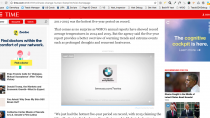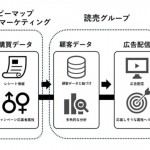テレビ広告の未来は、RTBにかかっている (英文)
Real-time bidding has become so entrenched in online media buying that it’s hard to believe this market was nonexistent two years ago. Marketers have utilized the technologies to target consumers who are most likely to convert, serving creative that drives a consumer back to a website to make a purchase.
But RTB can do so much more than serve as a line item on a media plan. In a world where the biggest of traditional channels – TV – is becoming increasingly fragmented, RTB has a lot of potential. While TV is still the best choice for building a brand, DVR and video on demand shrink the overall number of consumers who are exposed to ads, forcing advertisers to adjust. The data capabilities of RTB can fill in the gaps for reaching a mass audience with a brand message.
The prevalent way RTB is used right now is to target users based on their behaviors on a site, which only leverages part of the available data. Many are not utilizing a combination of behavioral and content data, which gives advertisers a look at the content that users are consuming, in real-time. Scoring impressions based on content makes it very easy to align RTB display with simultaneous TV campaigns.
Every execution is different, and there are a number of possibilities. For example, if advertisers run a TV plan that only shows during prime time, Monday through Thursday, RTB allows them to tailor display campaigns to match. So, not only are they targeting across screens during the same time frame, but they can also target those content types. Think of someone who turns to a laptop to check fantasy stats while Monday Night Football goes to commercial. The advertiser hits that consumer, at a greater effective cost.
This should shake perceptions that RTB is strictly a DR tactic as well. If you’re running RTB alongside TV, there’s a clear opportunity for brand advertisers to raise awareness. Entertainment advertisers could benefit largely, because their campaign strategies typically involve spending a great deal of money in a short time. If they’re not utilizing RTB in the online portion of the campaign, then they’re either making a direct buy, which limits audience, or they’re using a network to spray ads across several sites and hope they’re hitting an interested audience.
An advertiser ipromoting a film through “The Walking Dead” on AMC can utilize RTB to target similar online content channels and make sure they are hitting that audience. Entertainment advertisers typically have a date in mind – opening night, or the season premiere – and these campaigns are worthless if consumers see them two weeks later on their DVR. RTB remedies that.
CPG brands could also benefit from RTB. This is a vertical that has to account for the decline of audiences in formats like print and radio, and the slowly shrinking cable subscribers. This may be the golden age of TV, where everyone has an opinion on the big shows, but fewer young consumers are subscribing to cable. The ability to communicate a brand message has to happen online.
So what’s preventing brands from doing this right now? It primarily comes down to a lack of education. TV buying hasn’t changed in 20 years, and it’s a fairly easy process. Advertisers produce their spots, execute a buy, and the network pulls that spot and pushes it out on the agreed upon schedule (or run of network). Digital doesn’t go back 20 years, and as I said earlier, RTB barely goes back two. There’s always an educational lag, and an even greater comfort issue among buyers. TV lets brands cast a wide net, but that cost also means the message hits a lot of audience that may or may not be interested. There’s a lot of fat and very little efficiency, but it’s something that advertisers understand.
That should get easier as media mix models get more advanced. RTB providers can already access set top box data and marry digital exposures to tune-in. That way, an entertainment advertiser can see if consumers who saw a display impression had any lift on tune-in.
Marrying traditional media to RTB is going to become more commonplace in the coming year, as advertisers work harder to have multi-layered campaigns. While they might not totally understand RTB buying, they have to understand that conversations are happening digitally, through the phone, tablet, PC and smart TVs, and they have to have a presence in those arenas.
Read more: http://www.mediapost.com/publications/article/192449/the-future-of-tv-advertising-lies-in-rtb.html#ixzz2Jcb1FLlV











